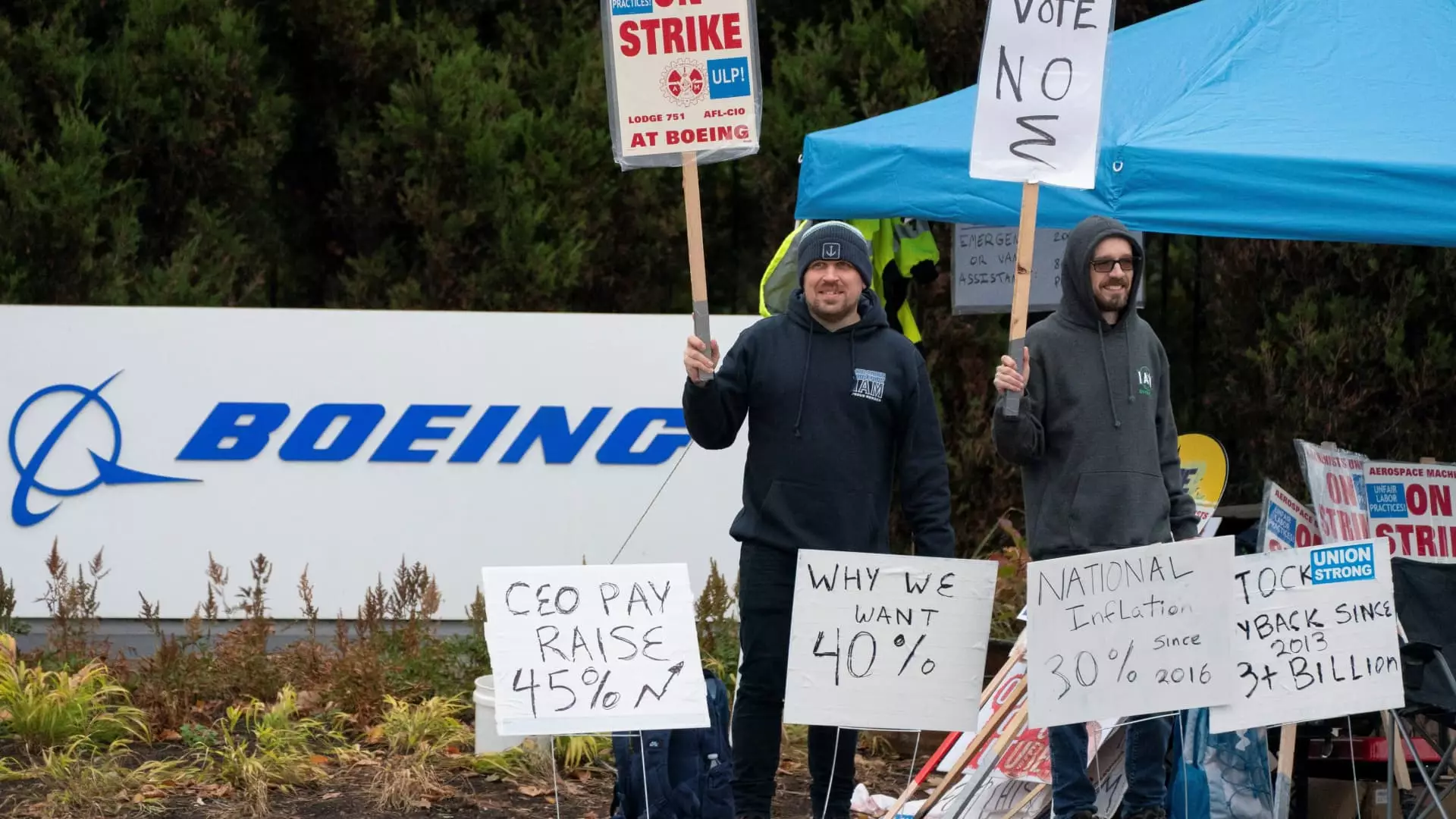For the past seven weeks, Boeing has faced significant operational challenges due to a strike initiated by its machinists’ union, the International Association of Machinists and Aerospace Workers District 751. Beginning on September 13, this strike emerged after workers overwhelmingly rejected a tentative agreement that, at the time, failed to address their core concerns, primarily around wages and working conditions. Strikes, as historical events teach us, often emerge from a place of frustration, and the Boeing machinists’ decision to withhold their labor was a distress signal regarding the deep-seated issues within the company.
In recent days, both parties have engaged in a renewed effort to find common ground, resulting in a new contract proposal that offers substantial wage increases. The revised proposal includes a staggering 38% increase in wages distributed over four years, a significant improvement compared to an earlier offer of 35%. This increase would ultimately result in nearly a 44% rise in compounded pay, an essential factor given the rising costs of living in the Seattle area, driven in part by the tech boom led by giants like Amazon and Microsoft.
Moreover, the contract offers workers a choice between a one-time ratification bonus of $12,000 or an alternative package that includes a lower bonus alongside a 401(k) contribution. This flexibility signifies the union’s attempt to cater to the diverse financial needs of its members, acknowledging that each worker’s situation is unique. The union’s leadership emphasizes the importance of ending the strike, stating that further escalation wouldn’t yield better results and could potentially lead to inferior future offers, a concern that resonates with many workers weary from their absence from the job.
Impact on Boeing and the Aerospace Industry
Boeing’s financial health hangs in the balance of these negotiations, especially given that the company’s recent quarterly reports have revealed staggering losses exceeding $6 billion. The prolonged strike has halted most aircraft production, a situation echoed in the recent U.S. job report, which illustrated the strike’s broader impact on the labor market. This scenario underscores the importance of the union’s actions, as they draw attention to the interconnectedness of labor relations within major industries and their influence on national employment figures.
For Boeing, the urgency to stabilize operations and return to full capacity cannot be overstated. The company’s CEO, Kelly Ortberg, has openly called for unity within the workforce to rebuild a business that has faced tumultuous setbacks, including production flaws and serious safety concerns. Boeing’s commitment to maintaining production in the Puget Sound area is a crucial element in these negotiations, particularly as workers express concern over job security amidst recent relocations of key projects, such as the 787 Dreamliner, to non-union factories in South Carolina.
The Biden administration’s involvement in the negotiations reflects the significance of the workforce and the aerospace industry to the national economy and employment landscape. Acting Labor Secretary Julie Su’s engagement with both sides showcases a government commitment to mediating labor disputes, a strategy that could redefine how future negotiations are approached across various sectors. President Biden’s public support for the machinists’ union highlights a broader political effort to advocate for labor rights and fair compensation, especially in times of economic uncertainty.
As workers prepare to cast their votes on the new proposal, the ramifications of this decision extend beyond Boeing’s walls, emphasizing a narrative of resilience and the necessity of collective bargaining rights. The outcome will not only influence Boeing’s future but also set a precedent for how labor relations evolve in the face of corporate challenges and shifting economic landscapes.
The ongoing negotiations between Boeing and its machinists’ union signify much more than just wage increases; they represent a pivotal moment in the modern labor movement within America’s aerospace industry. As discussions continue and workers prepare to vote on the new contract, it remains essential to recognize the broader implications of these negotiations—not only for the thousands of workers affected but for the entire ecosystem that depends on Boeing’s ability to operate successfully. The results could reshape company dynamics and set a new standard for labor relations in the future.

